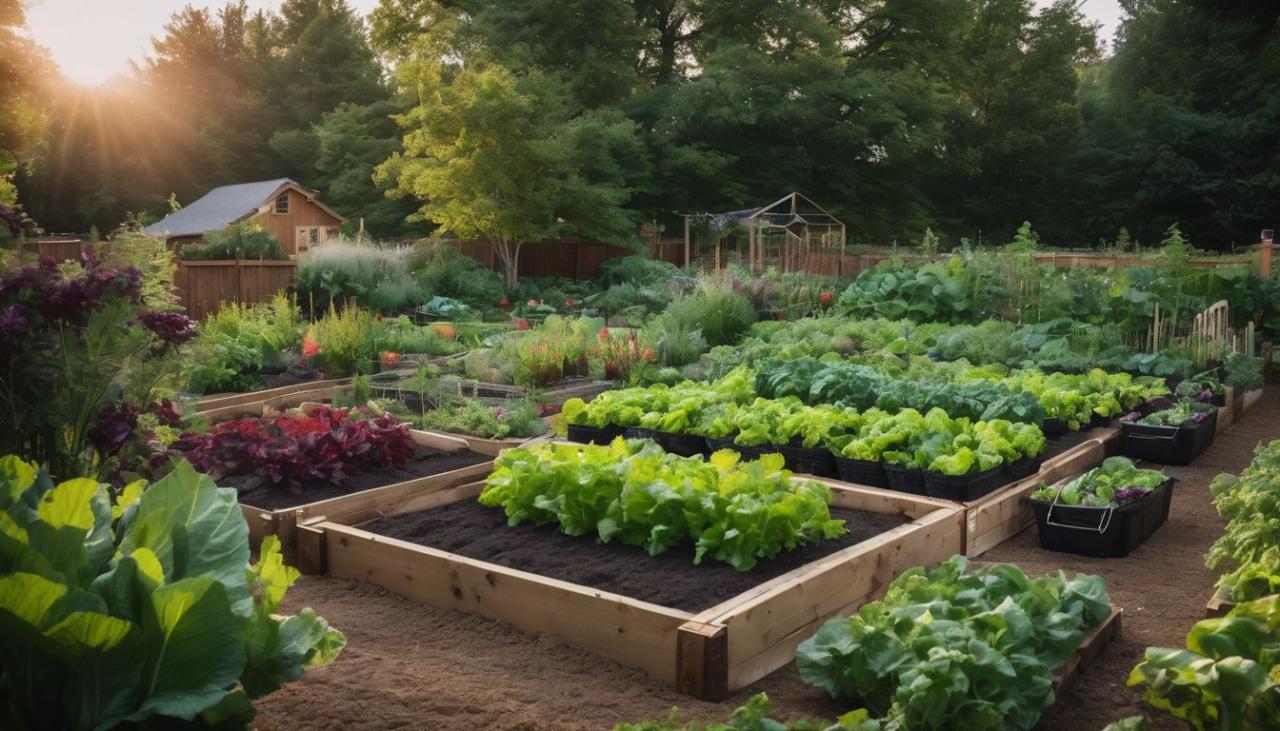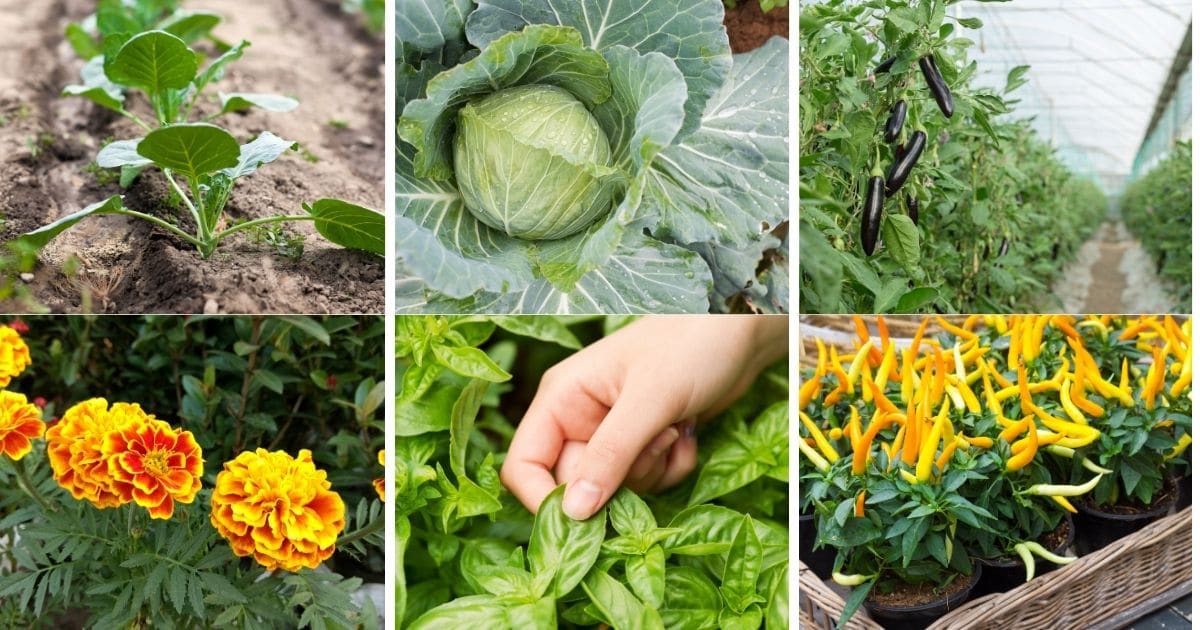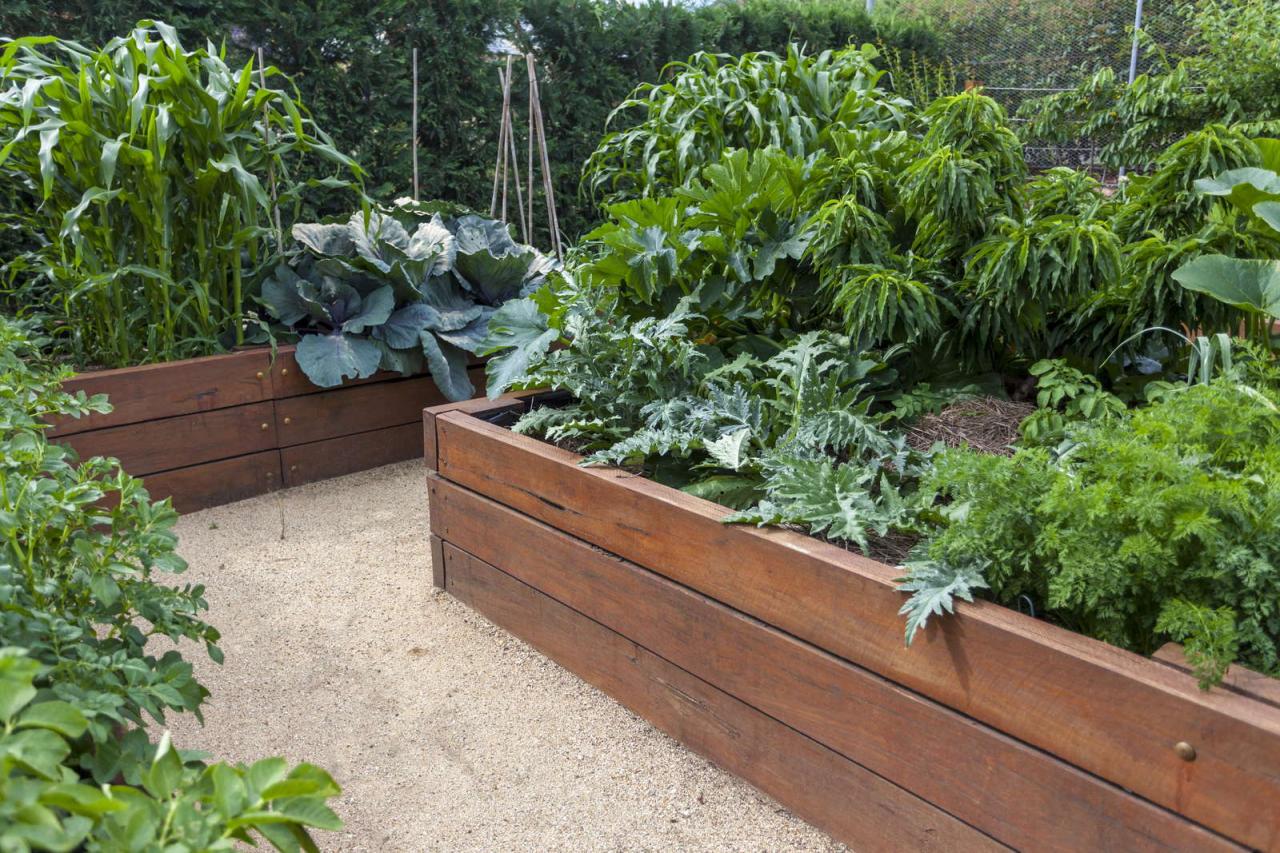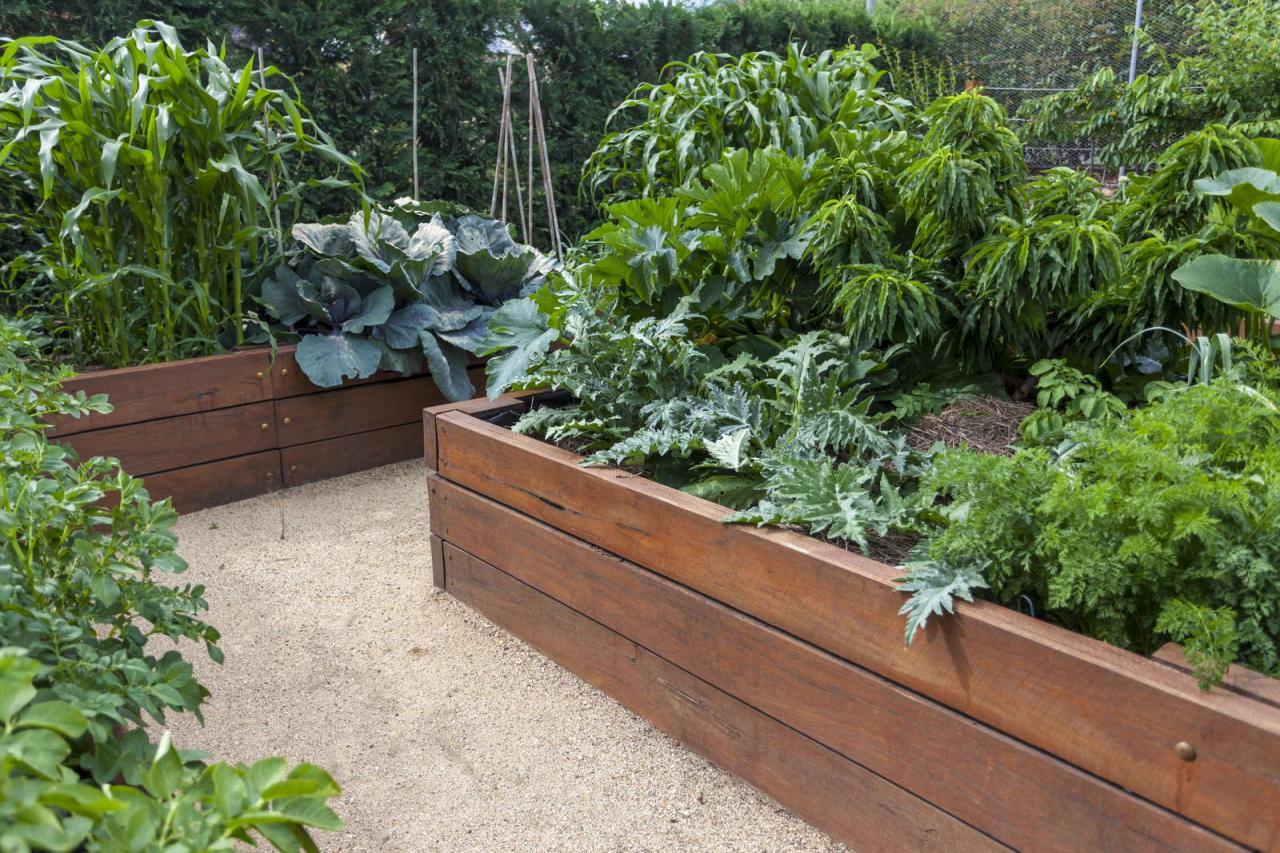Top 5 Plants You Should Never Grow in Raised Beds: Creating a flourishing raised bed garden is a rewarding experience, but certain plants can wreak havoc on your carefully cultivated ecosystem. From invasive species that choke out native plants to those with aggressive root systems that can damage the structure of your raised beds, there are several types of plants that should be avoided.
This article will explore five categories of plants that are best left out of your raised bed garden, providing valuable insights to help you make informed decisions about your plant selection.
Understanding the potential pitfalls associated with these plants can save you from headaches and ensure a healthy and thriving garden for years to come. Whether you’re a seasoned gardener or just starting out, this guide will equip you with the knowledge you need to create a beautiful and productive raised bed garden.
Invasive Species
Raised beds offer a controlled environment for gardening, but they can also become vulnerable to invasive plant species. Invasive plants are those that spread aggressively, outcompeting native species and disrupting the delicate balance of the ecosystem. They can quickly take over a raised bed, crowding out desired plants and making it difficult to maintain a healthy and diverse garden.
Invasive Plant Species Common in Gardens
Several invasive plant species are commonly found in gardens and can pose a threat to raised beds. Here are five invasive plants that you should avoid growing in your raised beds:
- Japanese Knotweed (Fallopia japonica): This aggressive plant forms dense thickets that can quickly overwhelm a raised bed. Its strong root system can damage structures and make it difficult to eradicate.
- English Ivy (Hedera helix): English ivy is a climbing vine that can smother other plants and trees. Its roots can also damage walls and foundations.
- Garlic Mustard (Alliaria petiolata): Garlic mustard is a biennial herb that can quickly spread and crowd out native wildflowers and other plants. It releases chemicals that inhibit the growth of nearby plants.
- Mile-a-Minute Weed (Persicaria perfoliata): This fast-growing vine can quickly cover a raised bed, blocking sunlight and hindering the growth of other plants. Its sharp spines can also make it difficult to remove.
- Purple Loosestrife (Lythrum salicaria): Purple loosestrife is a tall, showy plant that can spread rapidly in moist environments. It can outcompete native plants and disrupt the balance of wetland ecosystems.
Impact of Invasive Plants on Raised Bed Ecosystems
Invasive plants can have significant negative impacts on raised bed ecosystems:
- Competition for Resources:Invasive plants often outcompete native species for essential resources such as sunlight, water, and nutrients. This can lead to the decline or extinction of native plants, reducing biodiversity and disrupting the ecological balance of the raised bed.
- Alteration of Soil Structure:Some invasive plants, such as Japanese knotweed, have aggressive root systems that can damage the soil structure. This can reduce drainage, aeration, and nutrient availability, making it difficult for other plants to thrive.
- Introduction of Pests and Diseases:Invasive plants can introduce new pests and diseases into the raised bed ecosystem. These pests and diseases can spread to other plants, causing significant damage and requiring costly control measures.
Choosing Non-Invasive Plants for Raised Beds, Top 5 Plants You Should Never Grow in Raised Beds
It is crucial to choose non-invasive plants for raised beds to maintain a healthy and diverse garden ecosystem. Selecting native plants that are well-suited to your local climate and soil conditions is a great way to support biodiversity and prevent the introduction of invasive species.
Aggressive Root Systems
Raised beds offer a controlled environment for gardening, but they can be vulnerable to plants with aggressive root systems. These roots can damage the structure of the raised bed, leading to leaks, structural instability, and even collapse. Choosing plants with less aggressive root systems is crucial for maintaining the integrity and longevity of your raised bed.
Plants With Aggressive Root Systems
Several plants are known for their aggressive root systems, which can wreak havoc on raised beds. These roots can grow laterally and vertically, penetrating the walls and bottom of the raised bed, disrupting the structural integrity.
- Bamboo: Bamboo is a fast-growing plant with a network of rhizomes that can spread rapidly and aggressively. These rhizomes can easily penetrate the walls of raised beds, causing damage and potentially even lifting the bed.
- Mint: Mint is another plant with a reputation for being invasive. Its roots can spread horizontally, often outcompeting other plants and potentially damaging the raised bed.
- Tree Roots: Certain trees, such as willows and poplars, have shallow, spreading root systems that can easily extend beyond the confines of a raised bed. These roots can cause significant damage to the bed’s structure, particularly if they are seeking moisture or nutrients.
- Morning Glory: Morning glory vines are beautiful but can be invasive due to their extensive root systems. These roots can grow deeply and laterally, potentially disrupting the structure of raised beds.
- Grapevines: Grapevines are known for their vigorous growth and extensive root systems. These roots can grow deeply and spread widely, potentially causing damage to the raised bed.
Pests and Diseases: Top 5 Plants You Should Never Grow In Raised Beds

While raised beds offer many advantages for gardening, they can also create a haven for pests and diseases. Certain plants, known for attracting specific insects or harboring pathogens, can inadvertently contribute to a domino effect, spreading problems to other plants in your raised beds.
While choosing the right plants for your raised beds is crucial, don’t forget about the importance of selecting appropriate containers for your hanging plants. For instance, if you’re looking to create a stunning vertical garden, consider consulting our guide on Choosing the Right Pot for Your Hanging Plants to ensure optimal growth and aesthetics.
Once you’ve mastered the art of hanging plant selection, it’s time to dive into the world of raised beds and avoid the pitfalls of planting certain species that may not thrive in these confined environments.
Plants That Attract Pests and Diseases
Some plants are magnets for pests and diseases, making them less desirable for raised bed gardening. Their presence can disrupt the delicate balance of your garden ecosystem, increasing the risk of infestations and outbreaks.
- Susceptible Crops:Plants that are naturally susceptible to certain pests or diseases are best avoided in raised beds. For example, tomatoes are prone to blight, aphids, and whiteflies. Growing these in a raised bed can lead to widespread infestations that are difficult to control.
- Host Plants:Some plants serve as hosts for specific pests, providing food and shelter for them. For example, certain types of weeds like dandelion and chickweed can attract aphids, which can then move on to your vegetables and flowers.
- Fragrant Plants:While fragrant plants can be attractive to humans, they can also attract pests. For example, plants like lavender and rosemary can attract whiteflies and spider mites.
- Diseased Plants:If you have a plant that is already infected with a disease, it’s best to remove it from your raised bed. This will prevent the disease from spreading to other plants.
- Weak Plants:Plants that are stressed or weakened are more susceptible to pests and diseases. Make sure to provide your plants with adequate water, nutrients, and sunlight to help them stay healthy.
Shade-Intolerant Plants

Raised beds are often designed to provide optimal growing conditions for plants, including access to sunlight. However, some plants are particularly shade-intolerant and require full sun exposure to thrive. Planting these types of plants in shaded raised beds can result in stunted growth, poor flowering, and even death.
Plants Requiring Full Sun
It is crucial to understand the specific light requirements of the plants you intend to grow in your raised beds. Here are five plants that are known to require full sun and will struggle to thrive in shaded conditions:
- Tomatoes:Tomatoes are a popular garden vegetable that need at least 6-8 hours of direct sunlight per day to produce a bountiful harvest. In shaded conditions, tomatoes may develop weak stems, fewer fruits, and a higher risk of diseases.
- Peppers:Similar to tomatoes, peppers are sun-loving plants that require full sun exposure for optimal growth and fruit production. Shaded conditions can lead to stunted growth, reduced yields, and a higher susceptibility to pests and diseases.
- Sunflowers:Sunflowers are known for their towering height and vibrant blooms. These plants need at least 6 hours of direct sunlight to reach their full potential. In shaded conditions, sunflowers may grow tall and thin, with fewer and smaller flowers.
- Zucchini:Zucchini is a fast-growing vegetable that thrives in full sun. In shaded conditions, zucchini plants may produce smaller and fewer fruits. They may also become more susceptible to diseases.
- Basil:Basil is an aromatic herb that is widely used in cooking. Basil needs at least 6 hours of direct sunlight to produce its best flavor and aroma. In shaded conditions, basil may grow leggy and have a weaker flavor.
Effects of Shade on Plant Growth
Plants require sunlight for photosynthesis, the process by which they convert light energy into chemical energy to fuel their growth and development. When plants are deprived of sufficient sunlight, their growth is severely hampered.
Plants that are shade-tolerant have adapted to survive with less sunlight by producing more chlorophyll, the green pigment that absorbs light energy. However, shade-intolerant plants are not as efficient at using low light levels and struggle to survive in shaded conditions.
In addition to photosynthesis, sunlight also plays a crucial role in other plant processes, such as flowering, fruit production, and disease resistance. When plants are exposed to insufficient sunlight, these processes are also negatively affected.
Choosing Plants for Shaded Raised Beds
If your raised beds receive limited sunlight, it is essential to choose plants that are well-suited for shaded conditions.
- Hostas:Hostas are shade-loving perennials that are known for their attractive foliage. They can tolerate a wide range of light conditions, including partial shade and full shade.
- Ferns:Ferns are another excellent choice for shaded raised beds. They thrive in moist, shady conditions and come in a variety of sizes and shapes.
- Impatiens:Impatiens are annual flowers that produce vibrant blooms in a variety of colors. They are well-suited for shaded areas and can tolerate a wide range of light conditions.
- Coleus:Coleus are known for their colorful foliage. They can tolerate partial shade and even full shade, making them a great choice for shaded raised beds.
Water-Intensive Plants
Raised beds offer numerous advantages for gardeners, but their limited soil volume presents challenges for maintaining adequate moisture, particularly for water-hungry plants. The confined space of a raised bed means that the soil dries out more quickly compared to in-ground gardens.
This makes it crucial to select plants that can tolerate drier conditions and require less frequent watering.
When crafting your raised bed garden, it’s essential to consider the plants you choose. Certain species, like mint and sunflowers, can quickly outgrow their space and become invasive. Additionally, some plants, like tomatoes, are particularly susceptible to pesky gnats.
To prevent these tiny pests from wreaking havoc on your garden, learn how to identify a gnat infestation early by reading this helpful guide. By taking preventative measures and making informed plant selections, you can ensure a healthy and thriving raised bed garden.
Plants That Require Excessive Watering
Choosing plants that are known to be highly water-intensive can strain the water supply in raised beds, potentially harming other plants and leading to water stress. Here are five examples of plants that are typically unsuitable for raised beds due to their high water demands:
- Watermelon: This vine-like fruit requires consistent watering throughout its growing season, often needing daily watering during hot weather.
- Corn: Corn is a thirsty plant, needing frequent watering, especially during its early growth stages. Its deep root system can quickly deplete the soil moisture in raised beds.
- Lettuce: While lettuce can be grown in raised beds, it requires regular watering to maintain optimal growth and prevent wilting. Frequent watering can lead to over-watering and soil compaction in raised beds.
- Cucumber: Cucumbers are another vine-like plant that demands frequent watering, especially during hot weather. Their shallow roots can quickly deplete the soil moisture in raised beds.
- Tomato: Tomatoes are known for their high water needs, particularly during fruit production. In raised beds, frequent watering can be necessary, potentially leading to waterlogging and root problems.
Conclusion

By carefully considering the characteristics of the plants you choose for your raised beds, you can create a thriving and balanced ecosystem. Avoiding invasive species, plants with aggressive root systems, those that attract pests and diseases, shade-intolerant plants, and water-intensive plants will ensure a healthy and enjoyable gardening experience.
Remember, a little research and planning can go a long way in maximizing the success of your raised bed garden.
FAQ Resource
What are some examples of invasive plants that should be avoided in raised beds?
Common invasive plants include mint, bamboo, and morning glory. These plants spread rapidly and can quickly take over your garden.
How can I tell if a plant has an aggressive root system?
Look for plants with deep taproots or extensive lateral roots. These plants can damage the structure of raised beds and even interfere with the growth of other plants.
What are some strategies for preventing pest and disease issues in raised beds?
Practice good sanitation, rotate crops, and use companion planting to deter pests and diseases. Also, consider using organic pest control methods.
What are some drought-tolerant plants that are suitable for raised beds?
Some drought-tolerant plants include succulents, lavender, and rosemary. These plants require less watering and can thrive in drier conditions.
